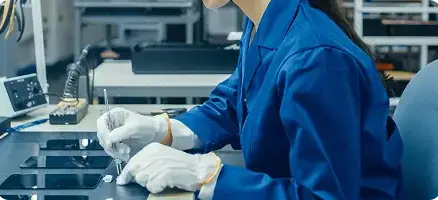High-Frequency PCB Manufacturing
for Signal StabilityAcross GHz Applications
High-frequency PCBs operate at signal frequencies exceeding 1 GHz with minimal loss and distortion. As a trusted high-frequency PCB manufacturer, WellPCB builds circuit boards with tight impedance control, dielectric stability, and low insertion loss across a wide frequency range. We support full RF PCB manufacturing from prototypes to high-volume runs.
- High frequency PCB manufacturing with Rogers, Taconic, and Arlon laminates
- RF PCB prototyping and manufacturing for 1 to 10,000+ units
- 3 mil laser drilling, 1.8 mil spacing, impedance modeling, and X-ray alignment for RF/microwave designs

ISO9001 ISO13485
ISO14001

IATF
16949

IPC-A-610H International
Certification

Fully Automated
AOI Inspection
- PCB Manufacturer
- High Frequency
High-Frequency PCB Manufacturer
You Can Count On
WellPCB manufactures high-frequency printed circuit boards using low-loss laminates, precision-milled copper, and impedance-matched RF stackups to support GHz-class signal transmission across complex RF and microwave systems.
We build on PTFE, hydrocarbon, and ceramic-filled materials, including Rogers RO4350B, RO3003, RO3010, Rogers, Taconic, and Arlon laminates, to support frequency performance up to 77 GHz. Every printed circuit is modeled with impedance targets within ±10% and optimized for low dielectric constant drift under thermal load.
Our fabrication process accommodates 1.8 mil trace/space, blind vias, high-frequency laminates, and smooth copper foil to reduce signal attenuation at high frequencies. The process supports high frequency PCB fabrication with up to 64 layers, 1.8 mil trace/space, and 3 mil laser-drilled vias with precision X-ray alignment for RF/microwave designs. Boards are manufactured with copper weights from 0.5 oz to 2 oz and dielectric thickness control down to 75 μm. Surface finishes include ENIG, immersion silver, and OSP for reliable RF pad connection.
Every board undergoes AOI, X-ray registration alignment, electrical testing, and impedance verification with test coupons. These RF PCBs are ideal for radio frequencies, radar front-ends, and millimeter-wave applications where phase accuracy, low Df, and high signal integrity are essential.
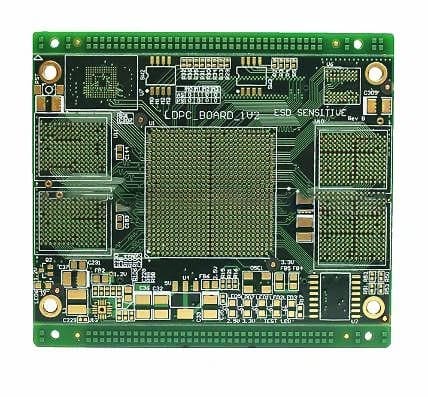
Our High-Frequency PCB Capabilities
As a high frequency PCB manufacturer, WellPCB supports high frequency PCB manufacturing with material-accurate stackups, low-loss RF laminates, and advanced fabrication processes optimized for microwave and GHz-class circuit applications. Each high-frequency circuit board is built to exacting tolerances for impedance, trace geometry, and layer registration.
We fabricate high-frequency multilayer PCBs using symmetrical and hybrid stackups, including microstrip and stripline configurations.
Dielectric layers are laminated with prepreg-controlled resin flow and vacuum press cycles, maintaining interlayer registration accuracy within ±25 µm and dielectric thickness tolerance to ±10%.
These constructions enable high-frequency circuit routing with stable impedance over wideband RF ranges.
| Capability | Specification |
|---|---|
| Build Time | 2 days to 5 weeks |
| Order Volume | 1 piece (prototype) to 10,000+ pcs |
| Scalability | Supports prototyping to mass production. |
| Lead Time Factors | Based on board complexity, material, and finish. |
| Standard | ISO 9001, ISO 13485, ISO 14001, IATF 16949, IPC-A-610H, UL |
| Test | E-test, visual inspection, AOI inspection, X-ray, 3D microscope, ICT, High-voltage test, impedance control test, Micro section, soldering capacity, thermal stress test, shocking test |
Our high-frequency circuit boards support minimum trace widths and spacing down to 1.8 mil using laser direct imaging (LDI) for resist patterning.
This resolution enables dense RF routing while maintaining controlled impedance with ±10% deviation on 50 Ω and 100 Ω differential lines.
Copper roughness is reduced via reverse-treated or rolled copper options to minimize insertion loss above 10 GHz.
We support mechanical via drilling down to 0.08 mm and laser microvias to 3 mil (0.075 mm), with support for blind and buried via layers in 1+n+1 and 2+n+2 stackups.
For RF signal layers, backdrilling removes unused via stubs up to 16 mil deep, reducing reflection and improving insertion loss at frequencies above 6 GHz.
Aspect ratios of up to 40:1 are achievable, depending on the stackup.
We source and laminate Rogers RO4350B, RO3003, and RO3010; Taconic TLX and RF-35; and Arlon 85N.
These materials offer Dk values between 2.2 and 10.2 and Df as low as 0.0013, with z-axis CTEs under 40 ppm/°C and thermal conductivity from 0.20 to 0.95 W/m·K.
Material selection is guided by your specific frequency range, target impedance, and thermal loading profile.
Each high-frequency PCB stackup is modeled using Polar SI9000 or equivalent field solver tools with specified dielectric and copper parameters.
Test coupons are panelized and impedance-tested using time-domain reflectometry (TDR) to confirm ±10% accuracy.
We support both single-ended and differential impedance test structures across high-speed and RF signal layers.
We support PCB panel formats from 2 mm × 5 mm to 22.5 × 47.2 inch. Finished board thicknesses range from 0.1 mm to 12 mm, controlled to ±10% across all builds.
Copper weight options include 0.5 oz, 1 oz, and 2 oz finished per layer, with surface roughness controlled to reduce dielectric loss in frequency-sensitive layers.
WellPCB offers ENIG (Electroless Nickel Immersion Gold) for stable RF pad metallization, as well as Immersion Tin, Immersion Silver, and OSP, all RoHS compliant.
For connector contacts and edge launch interfaces, hard gold and gold finger plating are available. Peelable solder mask and carbon ink printing are supported for switch pads and keyboard matrix circuits operating at low frequency.
Our production lines accommodate low-volume prototype runs (1 to 10 pieces) with lead times as fast as 48 hours for standard stackups and stocked materials.
High-volume production (10,000+ pieces) is supported with panelized processing, X-ray registration, inline AOI, and 100% electrical testing.
Turnkey PCB assembly is available for qualified RF applications, including BGA and QFN-mounted RF chipsets.
Why Choose WellPCB as Your High Frequency PCB Manufacturer?

RF and Microwave PCB Expertise

Advanced Impedance Control and Testing

Certified Materials and Compliance

Low-Volume Prototypes to Production Scale

Turnkey Services and Technical Support

Global Reach with Local Responsiveness
What Is a High-Frequency PCB?
High-frequency PCBs are printed circuit boards designed to transmit signals above 1 GHz with minimal loss, distortion, or reflection. These RF circuit boards utilize low dielectric constant (Dk) and low dielectric loss (Df) laminates, such as RO4350B, RO3010, and PTFE, to maintain impedance accuracy and minimize insertion loss across GHz frequency ranges.
Precise control over dielectric thickness, copper roughness, and trace width is required to achieve consistent impedance and prevent signal degradation. Unlike standard FR4 PCBs, high-frequency designs use engineered materials with stable dielectric constants across temperature and frequency bands to minimize phase delay and signal dispersion.
High frequency PCB manufacturers make these boards for RF and microwave systems such as radar, antennas, satellite receivers, and millimeter-wave circuits, where signal integrity and consistent frequency performance are required.
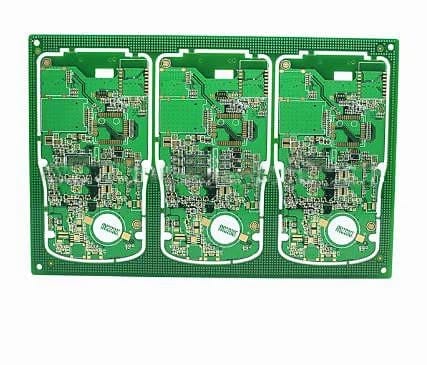
Key Features of High-Frequency PCBs

Low Signal Loss at High Frequencies

Stable Impedance and Dk Control

Minimal Moisture Absorption

Optimized Via Structures for RF Performance

Electromagnetic Shielding
and Crosstalk Suppression

Thermal Stability and Peel Strength
Materials Used in High-Frequency PCBs
High frequency PCB manufacturers rely on dielectric materials with low loss tangent (Df), stable dielectric constant (Dk), and tight thermal expansion control. These materials enable consistent impedance and low signal degradation in RF, microwave, and millimeter-wave circuits. Selection depends on frequency range, operating temperature, and environmental reliability.
We work with RF-qualified laminates, including PTFE, hydrocarbon-ceramic composites, and glass-reinforced substrates. Each material is chosen to maintain electrical uniformity across GHz-class designs while withstanding the thermal and mechanical demands of multilayer fabrication.

Rogers Laminates
Rogers RO4350B, RO3003, and RO3010 provide stable Dk values (3.0 to 10.2) with low Df (down to 0.0013) across broadband frequency designs, making it ideal for antenna feed networks and broadband filter applications.
These laminates support frequency ranges up to 77 GHz and are ideal for RF front-end circuits, phased arrays, and power amplifiers.

Taconic TLX and RF-35
Taconic materials offer excellent thermal stability and low moisture absorption for high-frequency signal paths.
TLX laminates provide low insertion loss and thermal stability, well suited for multi-GHz power amplifiers and RF switching circuits.
They’re compatible with standard PCB manufacturing processes.

Arlon 85N
Arlon 85N delivers high thermal conductivity (0.20 W/m·K), strong peel strength, and a Tg of 250°C, making it reliable for high-power radar transmitters and harsh environment RF modules.
It’s suitable for high-power RF applications and frequency printed circuit boards operating in extreme conditions.

Isola IS620 E-Fiberglass
Isola’s E-glass reinforced materials offer lower cost while maintaining signal performance up to 10 GHz.
They provide a mid-range option between traditional FR4 and PTFE systems for applications under 5 GHz.
High Frequency Material Properties
| Material | ARLON 85N | Rogers 4350B | Rogers RO3003 | Rogers RO3010 | Taconic TLX |
|---|---|---|---|---|---|
| Tg (°C) | 250 | 280 | — | — | — |
| CTE-z (ppm/°C) | 55 | 32 | 25 | 16 | 135 |
| Peel Strength (N/mm) | 1.2 | 0.9 | 1.2 | 1.6 | 2.1 |
| Td (°C) | 387 | 390 | 500 | 500 | — |
| Dk (@10GHz) | 4.2 | 3.5 | 3.0 | 10.0 | 2.5 |
| Loss Tangent | 0.0100 | 0.0037 | 0.0013 | 0.0022 | 0.0019 |
| Thermal Cond. (W/m·K) | 0.20 | 0.69 | 0.50 | 0.95 | 0.19 |
| Surface Resistivity (MΩ) | 1.6 × 10⁹ | 5.7 × 10⁹ | 1 × 10⁵ | 1 × 10⁵ | 1 × 10⁷ |
| Electric Strength (KV/mm) | 73 | 31 | — | — | — |
Applications of High-Frequency PCBs
High-frequency PCBs are essential in systems that demand fast signal propagation, low distortion, and precise impedance control across GHz frequency ranges.
These boards support data-heavy, real-time processing in RF, microwave, and high-speed digital environments, where traditional PCB materials fail to maintain stable electrical performance, such as in radar, 5G mmWave base stations, and automotive ADAS modules operating at 24 to 77 GHz.

Telecommunications

Medical Electronics

Automotive Radar and Connectivity

Aerospace and Defense

Consumer and Industrial Devices
How to Order Your High Frequency PCB
in 5 Easy Steps

Submit Your PCB Design
Upload your Gerber files or use our easy online PCB design tool to create your board layout. Make sure your files are complete and correctly formatted to ensure smooth processing and production accuracy.

Select Your PCB Specifications
Customize your order by choosing the technical specifications—number of layers, board dimensions, thickness, copper weight, solder mask color, surface finish, and more. Our intuitive interface helps you configure everything based on your project’s needs.

Get an Instant Quote
Once your design and specs are in place, you'll receive a transparent, instant quote. Pricing updates in real time as you modify options, so you can adjust your selections to match your budget before placing the order.

Confirm Order & Make Payment
Review your entire order for accuracy, including file previews and selected specs. After confirmation, proceed to secure checkout and choose your preferred payment method. You’ll receive an email confirmation with order details.

Production & Delivery
Your PCB moves into production immediately. We’ll keep you updated throughout the manufacturing process. Once completed, your boards are carefully packed and shipped to your door, with tracking information provided for your convenience.
WellPCB is trusted by millions of
businesses and innovators.
























Why Choose PCB Manufacturer?
WellPCB stands out among USA PCB manufacturers by delivering superior quality, advanced solutions, and unmatched reliability. With years of experience serving global markets, WellPCB has earned a reputation as one of the top PCB manufacturers in USA.
WellPCB specializes in multilayer PCBs for advanced electronic applications. You can order these boards with $100 off using our special offer, providing high complexity at competitive rates for demanding projects.

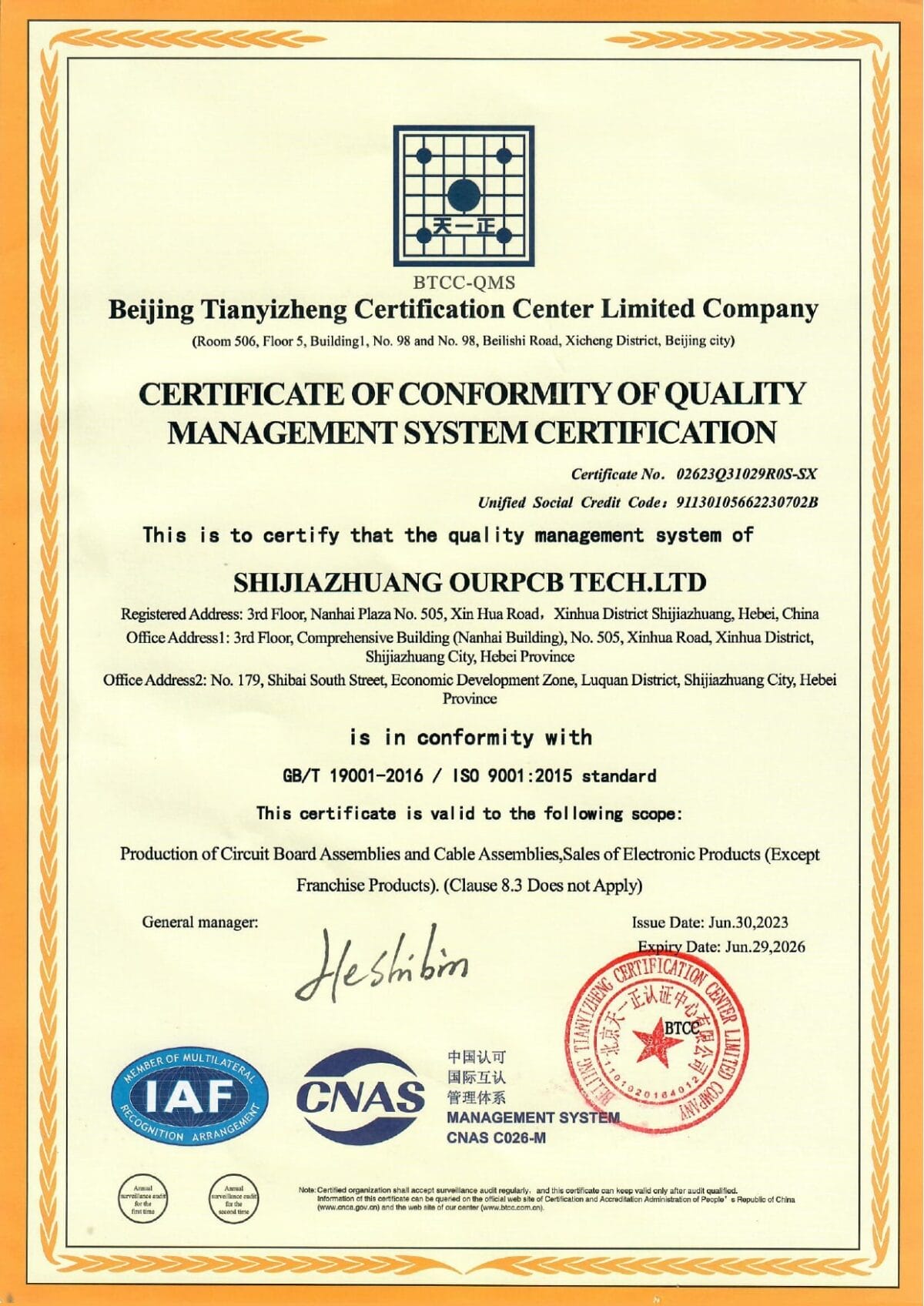
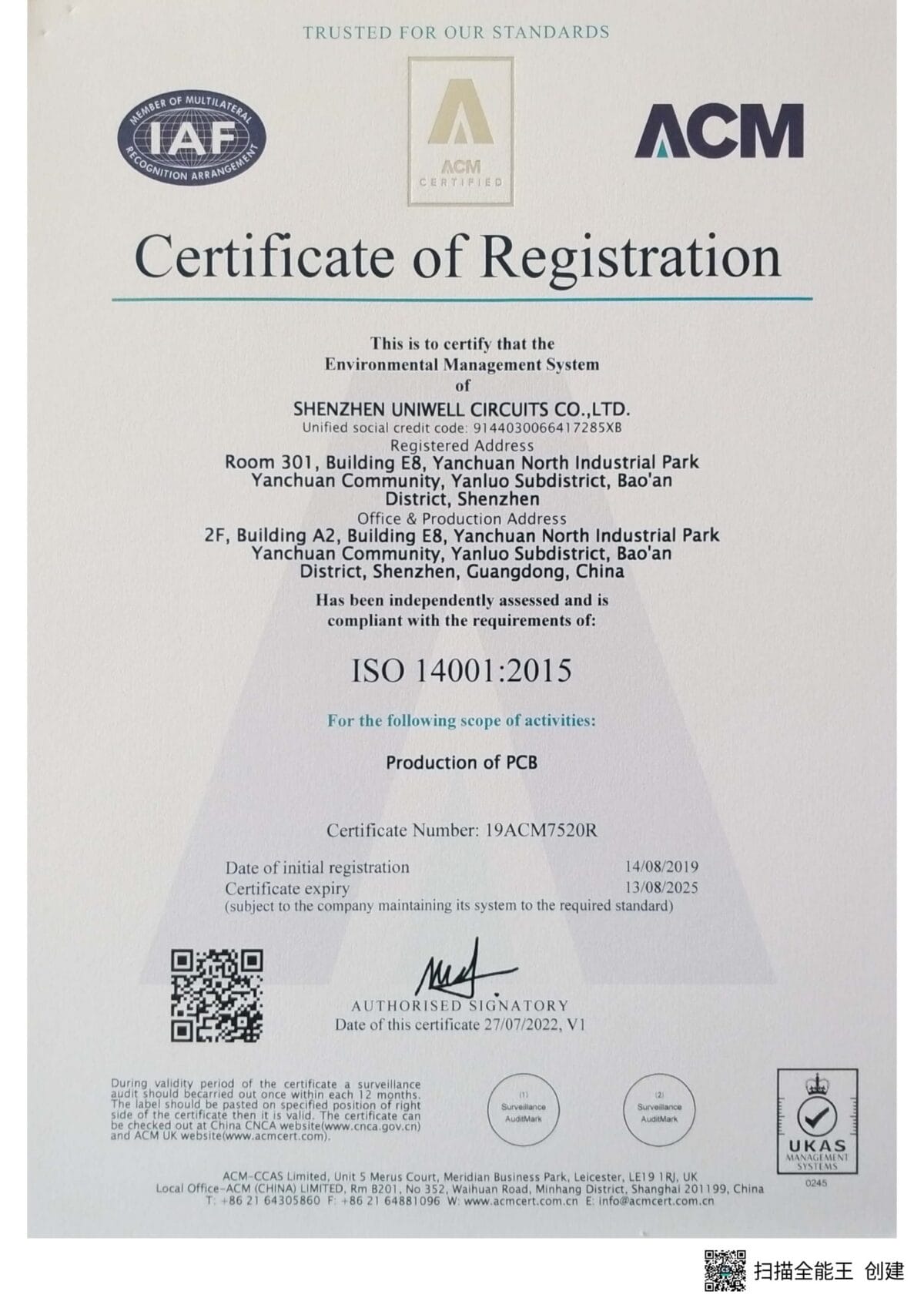
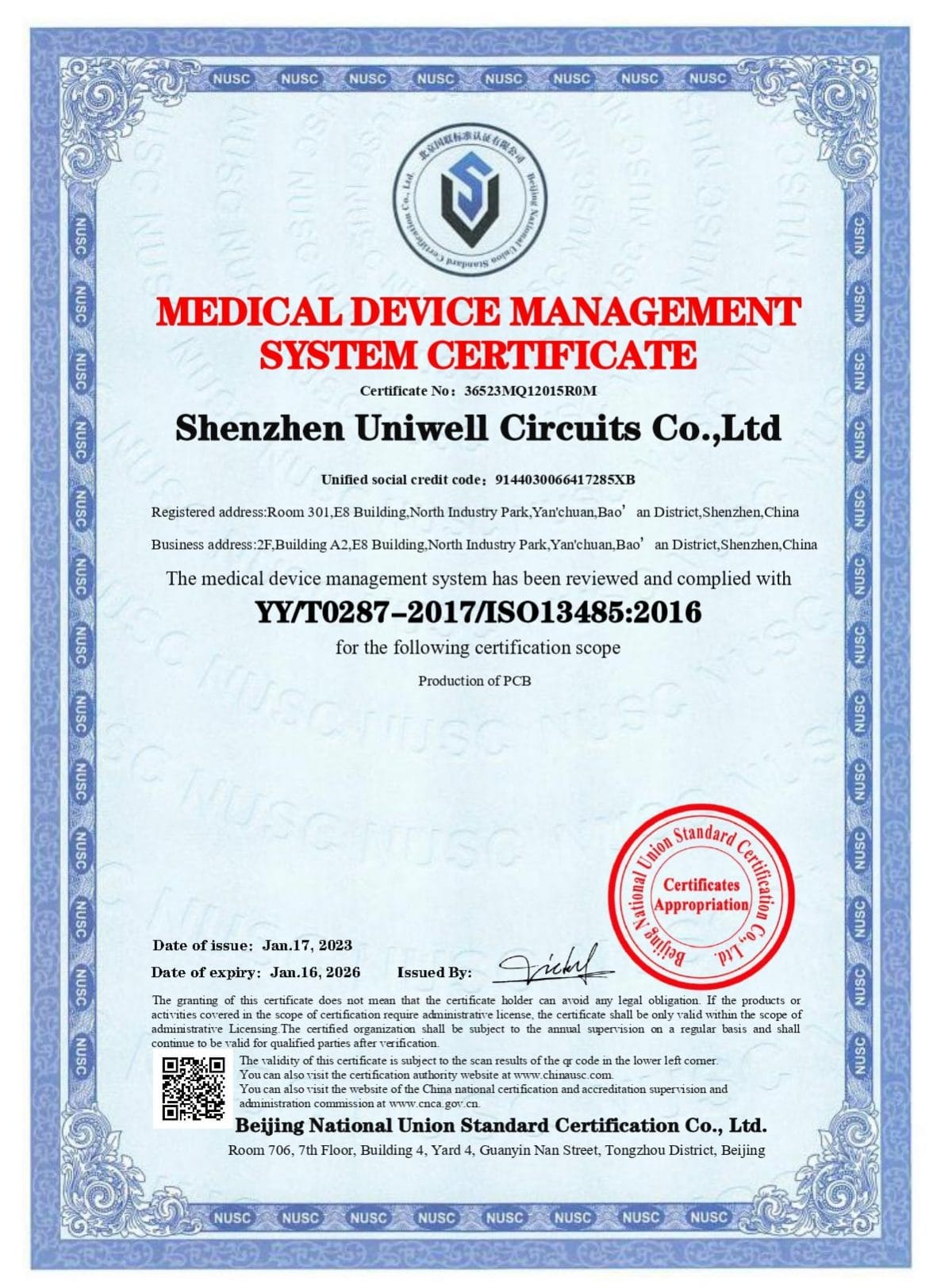
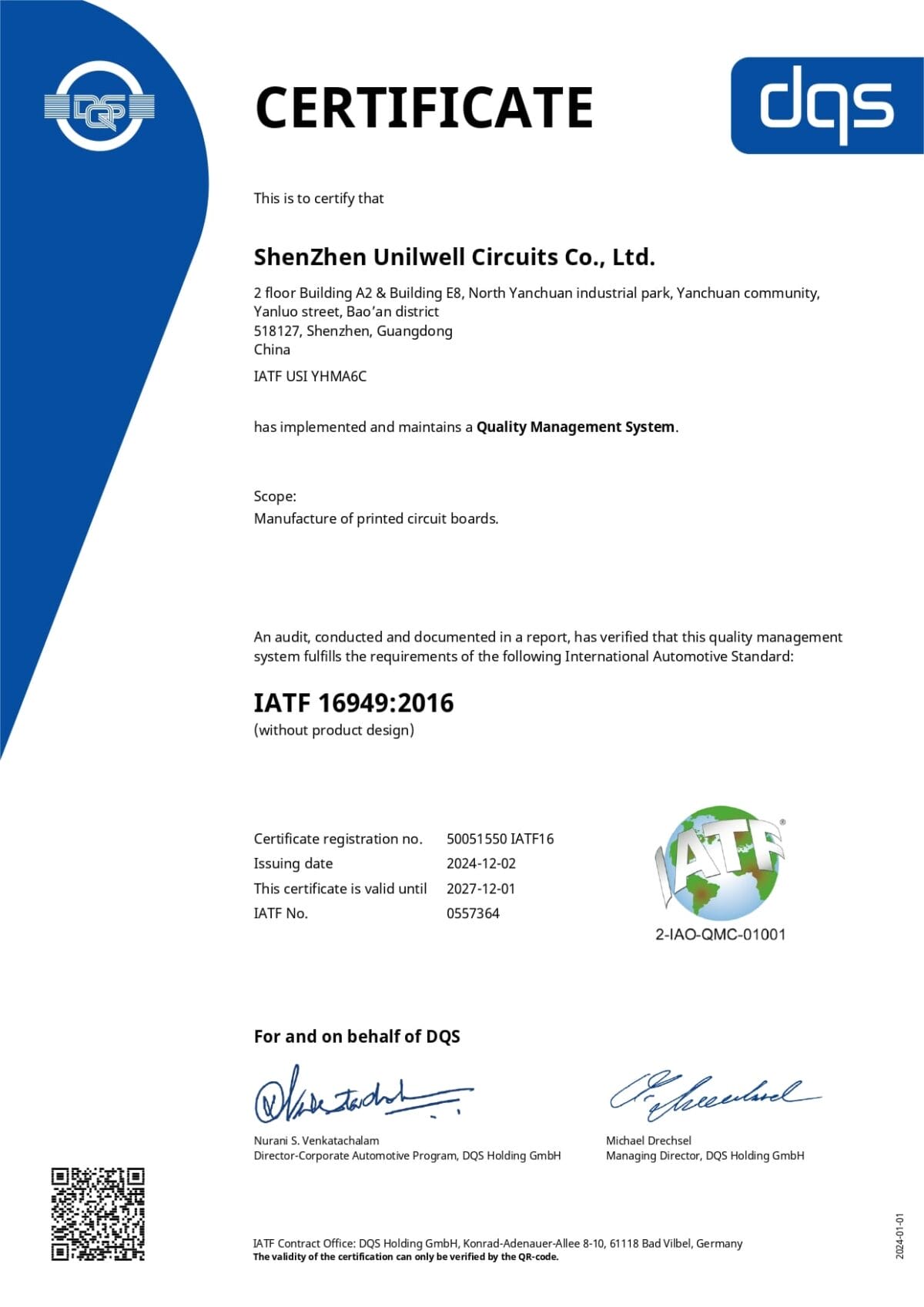
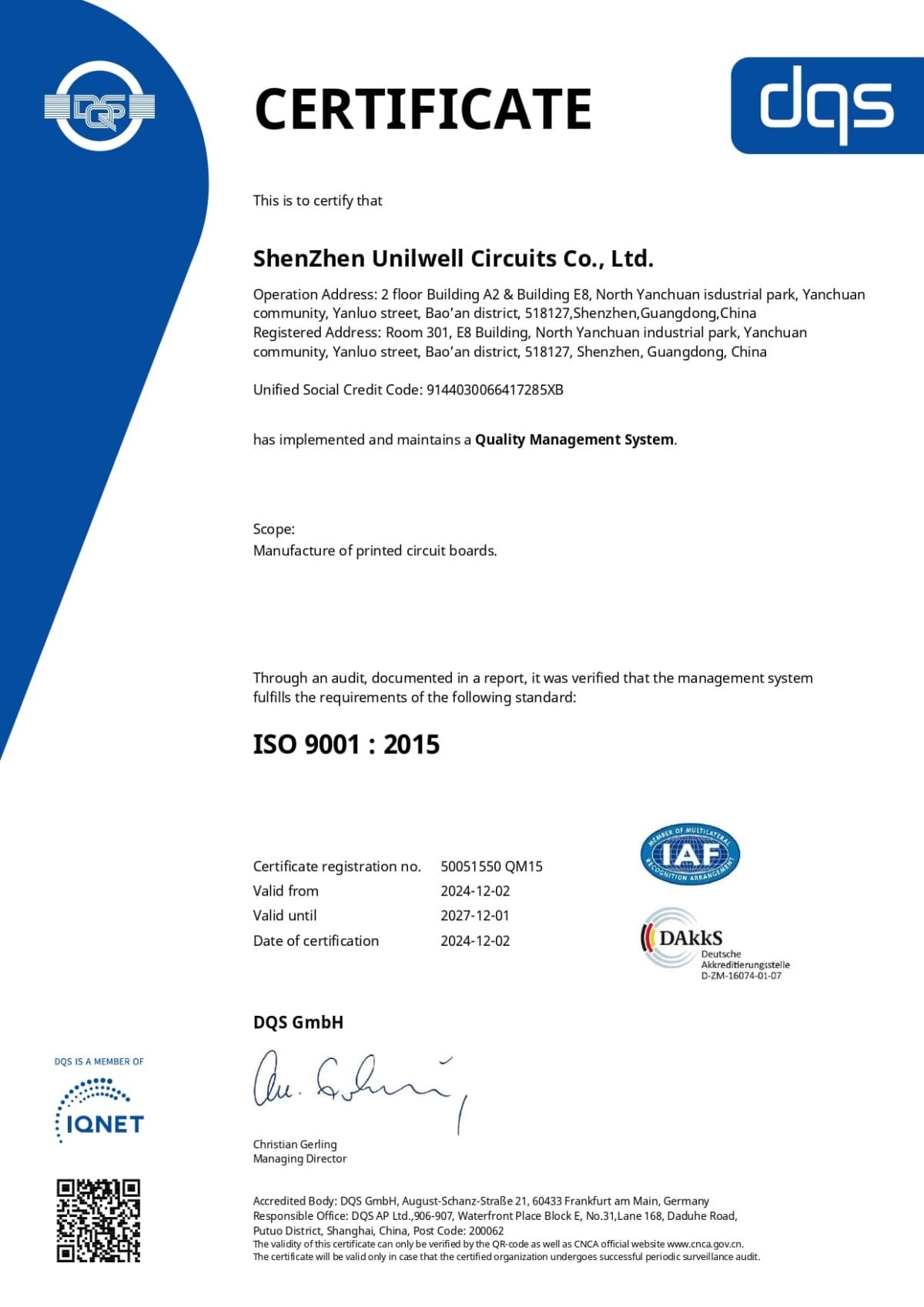


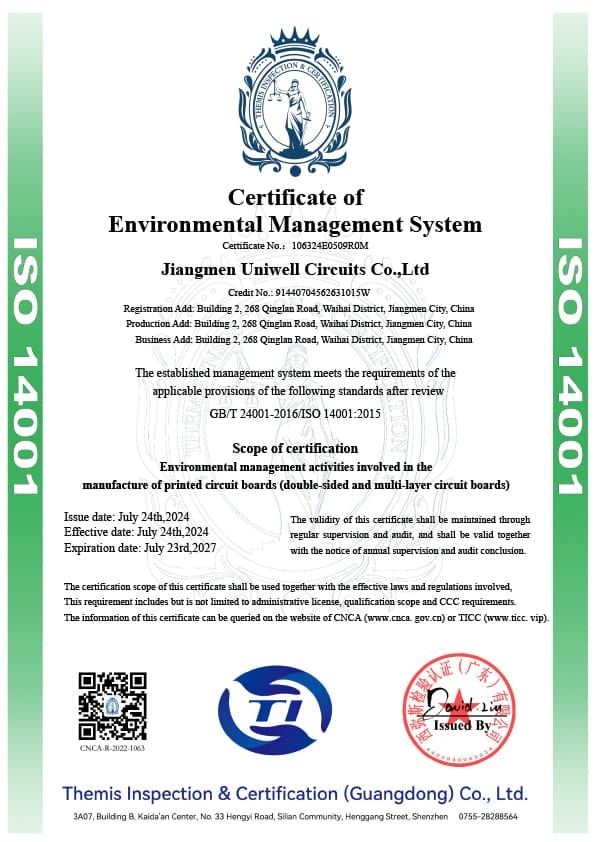


Hommer Zhao
Founder and Chief Editor – Hommer Zhao
Welcome! I’m Hommer Zhao, the founder and Chief Editor of WellPCB. With years of experience in the PCB industry, I’m committed to making sure our content is both accurate and helpful. We’re proud to serve a growing community of over 4,000 customers worldwide, and our goal is to provide you with the best resources and support. Your satisfaction is our top priority, and we’re here to help you every step of the way!

Jesse Holland
Technical Manager – Jesse Holland
Hi, I’m Jesse Holland, an Engineer and Technical Manager at WellPCB. With years of experience in PCB design and engineering, I’m here to ensure that every project we work on meets the highest technical standards. I lead our team, focusing on precision and innovation, collaborating closely with clients to provide tailored solutions and expert guidance. Whether you’re facing a complex design challenge or need advice on technical aspects, I’m here to ensure your project is a success from start to finish.

Nathan Jensen
Purchasing Manager – Nathan Jensen
Hi, I’m Nathan Jenson, the Purchasing Manager at WellPCB. I’m responsible for sourcing the best materials and components to ensure our products meet the highest quality standards. With my extensive experience in procurement, I work closely with suppliers to secure reliable and cost-effective solutions while maintaining strong relationships to support our operations. I aim to ensure every project runs smoothly by providing the resources needed to deliver on time and to your satisfaction.

Emma
Sales Manager – Emma
Hey, I am Emma, sales manager at WellPCB. I studied electronic science and technology at university and have served customers for PCB and PCB Assembly service for several years.
I enjoy communicating with customers and our technicians to solve problems, and customers always say, "It's great to have you onboard".
It is my pleasure and honour to be helpful. Contact me now, and you'll know.

Bella and Cassiel
Sales Representatives – Bella and Cassiel
We’re Bella and Cassiel, your dedicated sales representatives at WellPCB. With our extensive knowledge of the PCB industry, we’re here to provide exceptional service and support. We take the time to understand your unique needs and are always ready to offer tailored solutions and advice. Whether you need product recommendations, assistance with your orders, or simply have a question, we’re here to ensure your experience is smooth and seamless at every step.

Mandy and Wendy
Sales Representatives – Mandy and Wendy
We’re Mandy and Wendy, your friendly sales representatives at WellPCB. Passionate about helping our customers, we bring a wealth of experience in the PCB industry to provide you with the best solutions and service. We take pride in building strong relationships with our clients, understanding their specific needs, and offering personalised support to ensure their satisfaction. Whether you’re looking for advice, product information, or assistance with any part of your order, we’re here to make your experience as smooth and efficient as possible.
Our Team
Our skilled engineers and technicians bring expertise and precision to every PCB assembly project. Committed to quality, efficiency, and innovation, our team ensures every order meets the highest UL, IPC, ROHS & REACH standards, delivering reliable solutions tailored to your needs.
- Founder and Chief Editor – Hommer Zhao
- Technical Manager – Jesse Holland
- Purchasing Manager – Nathan Jensen
- Sales Manager – Emma
- Sales Representatives – Bella and Cassiel
- Sales Representatives – Mandy and Wendy
High Frequency PCB Manufacturer Case Studies

Case Study
This project involves the fabrication of a 4-layer high-frequency PCB specifically designed for power amplifier applications. Utilizing a mixed-material press structure with Rogers 4350 and FR4, it ensures both superior RF performance and cost-effectiveness, with precision routing and controlled impedance.
Product Specifications:
- Application: Power Amplifier
- Layers; 4
- Material Stack-Up: ROGERS 4350 + FR4 (Mixed Lamination)
- Board Thickness: 2.3 mm
- Surface Treatment: Immersion Gold (ENIG, 2μ”)
- Outer Line Width/Spacing: 7/7 mil
- Inner Line Width/Spacing: 5/5 mil
- Minimum Hole Diameter: 0.6 mm
- Special Process: Mixed pressing for hybrid dielectric layers

Case Study
This project showcases a 4-layer HDI high frequency PCB, engineered with a hybrid Rogers + FR4 stack-up. Designed for RF signal integrity, miniaturized interconnects, and dense component placement, the board is ideal for compact wireless communication systems and IoT modules.
Product Specifications:
- Layers: 4
- Dimensions: 72.1 mm × 58.6 mm
- Board Thickness: 1.6 mm
- Material: Rogers + FR4 (hybrid construction)
- Surface Finish: ENIG (Electroless Nickel/Immersion Gold, 2μ”)
- Minimum Hole Diameter: 0.6 mm
- Special Technology: HDI technology (likely blind vias, microvias)

Case Study
This project involves a 2-layer high-frequency PCB with impedance control, designed for signal-sensitive applications requiring precision transmission characteristics. Built on FR4 material and finished with gold plating, this board offers both cost-efficiency and excellent electrical performance for high-speed signal paths.
Product Specifications:
- Layer Count: 2 layers
- Board Size: 108.82 mm × 88.56 mm
- Board Thickness: 1.6 mm ± 0.1 mm
- Base Material: FR4
- Minimum Hole Diameter: 0.3 mm
- Surface Finish: Gold-plated
- Special Technology: Impedance Control
Client Feedback On Our High Frequency PCBs
As an R&D manager, I have had an outstanding experience working with WELL-PCB. For many years, our company has entrusted them with the production, assembly, and programming of the boards developed in our R&D unit, and they have consistently exceeded our expectations.
Hamid Reza Moshayedi
R&D Manager
Their work is very impressively perfect. Today, when they check our company PCB board after assemble. They found a fake short point which many engineers has never found in the past years. But that is just designed so. The PCB board quality is excellent. Their service is also excellent.
MikeZ
My friend introduced WellPCB to me, the first try, a little look forward to. I ordered a 47*72 10ps PCB, and I can’t wait to receive my PCB. So I used expedited service and received my PCB in three days. I tested and soldered the PCB, Quality is really good, silkscreen, plating also great.
Warren Cliton
High Frequency PCB Manufacturer FAQs
What are the design guidelines for high-frequency PCBs?
Designing a high-frequency PCB requires impedance-controlled traces, reduced trace lengths, and consistent dielectric properties across layers. Use microstrip or stripline configurations for predictable frequency transmission, apply tight trace width and spacing (eg. 3 mil / 3 mil), and avoid 90-degree bends that cause signal reflection.
Maintain clear return paths, isolate high-speed nets, and use ground planes to reduce EMI and crosstalk. Via count should be minimized, and all layout decisions should follow validated PCB design guidelines specific to RF frequency ranges.
What are the most common manufacturing challenges with high-frequency PCBs?
Common challenges for high frequency PCB manufacturers include copper foil roughness, which increases insertion loss; solder mask with high dissipation factor, which adds dielectric loss; and via stub reflections in high-speed RF layers.
Dimensional instability and thermal expansion can also shift impedance values. Managing these issues requires smoother copper surfaces, low-loss solder mask, backdrilled vias, and thermally stable laminates like Rogers RO3003 or Arlon 85N.
Controlled PCB fabrication, verified impedance testing, and tight layer registration are essential for performance at microwave frequencies.
How do I choose the right PCB material for high-frequency designs?
Selection depends on frequency range, dielectric constant (Dk), dissipation factor (Df), thermal performance, and cost. PTFE-based materials offer excellent signal integrity above 10 GHz, while hydrocarbon-ceramic blends like RO4350B balance performance and manufacturability.
For lower-frequency applications under 6 GHz, Isola IS620 or Taconic TLX may be sufficient. Always factor in coefficient of thermal expansion, moisture resistance, and laminate availability during the PCB design process.
Can WellPCB help with high-frequency PCB layout and material selection?
Yes, we offer DFM reviews and engineering guidance for PCB layout, impedance modeling, stackup planning, and material matching. Our team will advise on trace geometry, layer structure, and thermal strategies to optimize frequency performance and manufacturability for your RF PCB design.
WellPCB: Leading High Frequency PCB Manufacturer
Trusted by Engineers Worldwide
Get $100 Off Your First Order!
Our high frequency PCB manufacturing services include full material sourcing, stackup modeling, and impedance testing to help you meet the demands of advanced frequency applications in radar, telecom, aerospace, and medical electronics.
